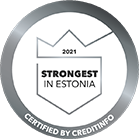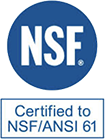All About Hypochlorous Acid:
Hypochlorous acid is a weak acid that is naturally produced by the human body as a part of the immune system. It is created by white blood cells and is utilized to kill bacteria and other pathogens that can cause infections. In the realm of disinfectants and cleaning products, hypochlorous acid is renowned for its ability to eliminate germs and bacteria on various surfaces.
The mechanism of action of hypochlorous acid involves disrupting the cell walls of bacteria and other microorganisms, leading to their demise. This process, known as oxidation, entails the transfer of electrons from one molecule to another. Upon encountering bacteria or other microorganisms, hypochlorous acid donates electrons to them, resulting in the damage of their cell walls and eventual death. This efficacy makes it a potent disinfectant, pivotal in preventing the spread of illness.
Despite being termed a weak acid, hypochlorous acid is less acidic than common organic substances like orange juice or a ripe banana. Its weak acidic nature allows it to partially dissociate into a positively charged Hydronium ion (H3O+) and a negatively charged Hypochlorite ion (OCl–) when dissolved in water. The effectiveness and safety of hypochlorous acid are maximized when it maintains a pH level between 5.4 and 6.0, ensuring minimal dissociation.
However, the effectiveness of hypochlorous acid is compromised if the pH of the solution deviates from the optimal range. A pH that is too low can cause the transformation of hypochlorous acid back into chlorine, potentially forming chlorine gas. Conversely, a pH that is too high prompts the dissociation of hypochlorous acid into the less effective Hypochlorite ion, which may lead to surface damage and health risks.







